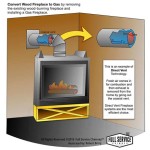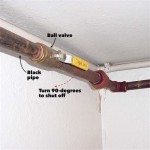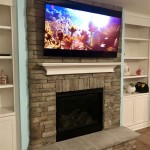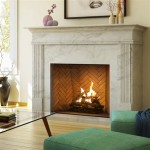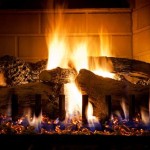Custom Cast Iron Fireplace Insert: A Comprehensive Guide
The traditional fireplace, a focal point of warmth and aesthetic appeal, has evolved significantly over time. While open fireplaces offer a certain rustic charm, their efficiency in heating a space is often limited. A fireplace insert provides a solution to this inefficiency by transforming a traditional fireplace into a more effective heating appliance. Among the various types of fireplace inserts available, the custom cast iron fireplace insert stands out due to its durability, heat retention capabilities, and potential for unique design elements.
This article delves into the intricacies of custom cast iron fireplace inserts, exploring their benefits, the customization process, factors to consider during selection, installation considerations, and maintenance requirements. Understanding these aspects is crucial for homeowners seeking to enhance the functionality and aesthetic value of their fireplaces.
Advantages of Custom Cast Iron Fireplace Inserts
Cast iron, known for its robust nature and excellent heat retention, is a popular material choice for fireplace inserts. Custom cast iron inserts offer several advantages over standard models, making them a worthwhile investment for homeowners seeking both performance and personalization.
One of the primary advantages is enhanced heating efficiency. Cast iron's ability to absorb and radiate heat slowly and evenly contributes to consistent warmth over extended periods. This efficiency translates to lower heating costs, especially in colder climates. A custom-fitted insert, designed specifically for the dimensions of the existing fireplace, minimizes heat loss and maximizes the transfer of heat into the living space. The tightly sealed design prevents drafts and reduces the amount of heat escaping up the chimney, common issues with open fireplaces.
Durability represents another significant benefit. Cast iron is exceptionally strong and resistant to warping or cracking under high temperatures. A well-maintained cast iron insert can last for decades, providing reliable heating year after year. The robust construction withstands the rigors of daily use, making it a long-term heating solution. Furthermore, the material's resistance to corrosion ensures longevity, especially when properly treated and cared for.
Aesthetics form a crucial aspect of a custom insert. Unlike mass-produced inserts, a custom-made cast iron insert allows for personalization in design and detailing. Homeowners can collaborate with manufacturers to create an insert that complements the architectural style and interior decor of their homes. This might include intricate patterns, custom finishes, or incorporation of specific design motifs. The ability to choose the finish, from matte black to enamel colors, allows for seamless integration with the existing fireplace surround and the overall room aesthetic. The customization options ensure that the insert becomes a visually appealing focal point, enhancing the overall ambiance of the living space.
Increased safety is an additional benefit. A properly installed fireplace insert significantly reduces the risk of chimney fires and carbon monoxide poisoning compared to open fireplaces. The controlled combustion within the insert's firebox minimizes the amount of creosote buildup in the chimney, reducing the likelihood of a chimney fire. A well-sealed insert also prevents carbon monoxide from leaking into the home, provided that it is correctly vented and regularly inspected. Furthermore, the enclosed design prevents sparks and embers from escaping into the living area, mitigating the risk of accidental fires.
The Customization Process: Design and Functionality
The process of designing and acquiring a custom cast iron fireplace insert involves several stages, each requiring careful consideration and collaboration between the homeowner and the manufacturer. Understanding these steps ensures a successful outcome that meets the homeowner's specific needs and preferences.
The initial stage involves assessment and measurement. Accurate measurements of the existing fireplace opening are crucial for creating a properly fitting insert. This includes the width, height, and depth of the firebox, as well as the dimensions of the fireplace surround. A professional installer or the manufacturer's representative typically performs these measurements to ensure accuracy. This stage also involves assessing the condition of the existing chimney to determine if any repairs or modifications are necessary before installation. Factors such as chimney height, diameter, and potential obstructions are evaluated to ensure proper ventilation and safe operation of the insert.
Design consultation follows the assessment. This stage involves working closely with the manufacturer to discuss design preferences, functional requirements, and budgetary constraints. Homeowners can explore various design options, including the style of the insert, the type of door (single, double, or glass-fronted), the finish, and any decorative elements. The consultation also addresses functional aspects such as the desired heat output, the size of the firebox, and any specific features like a blower or thermostat. The manufacturer provides guidance based on their expertise and experience, helping homeowners make informed decisions about the design and features of their custom insert. This may include creating preliminary sketches or 3D models to visualize the final product.
Material specification and manufacturing mark the next phase. Once the design is finalized, the manufacturer specifies the type of cast iron to be used, as well as any other materials required for the insert's construction. The manufacturing process involves creating a mold based on the approved design, pouring molten cast iron into the mold, and allowing it to cool and solidify. After the casting is complete, the insert undergoes finishing processes such as grinding, polishing, and applying the desired finish. Careful attention to detail during this stage ensures that the insert meets the highest standards of quality and craftsmanship. Quality control checks are performed throughout the manufacturing process to identify and correct any defects before the insert is shipped to the homeowner.
Installation represents the final and critical stage. Proper installation is essential for ensuring the safe and efficient operation of the custom cast iron fireplace insert. This task should be performed by a qualified professional with experience in installing fireplace inserts. The installation process typically involves preparing the existing fireplace opening, installing a chimney liner, connecting the insert to the chimney liner, and sealing the insert to the fireplace surround. The installer also tests the insert to ensure that it is functioning correctly and that there are no leaks or safety hazards. Homeowners should receive thorough instructions from the installer on how to operate and maintain the insert properly. Regular inspections and maintenance, such as cleaning the chimney and checking for cracks or damage, are essential for ensuring the long-term performance and safety of the insert.
Factors to Consider When Selecting a Custom Cast Iron Fireplace Insert
Choosing the right custom cast iron fireplace insert requires careful consideration of several factors to ensure that it meets the homeowner's specific needs and enhances the overall functionality and aesthetic appeal of their home. These factors include heating requirements, design preferences, budget constraints, and compliance with local regulations.
Heating requirements constitute a primary consideration. The size of the space to be heated, the climate, and the insulation levels of the home all impact the heating capacity required from the insert. A larger space or a colder climate necessitates a more powerful insert with a higher BTU (British Thermal Unit) rating. Conversely, a smaller space or a milder climate may require a less powerful insert. Consulting with a heating professional or the manufacturer's representative can help determine the appropriate BTU rating for the specific circumstances. Choosing an insert with sufficient heating capacity ensures that the space is adequately warmed without excessive energy consumption.
Design preferences play a pivotal role in the selection process. The insert should complement the architectural style and interior decor of the home. Consider the style of the fireplace surround, the color scheme of the room, and any existing design elements. Choose an insert with a design that integrates seamlessly with the overall aesthetic. Options include traditional, contemporary, or rustic styles, as well as various finishes and decorative elements. The door style, whether single, double, or glass-fronted, also contributes to the overall appearance of the insert. Selecting a design that aligns with personal taste and enhances the visual appeal of the living space ensures satisfaction with the final product.
Budget constraints are always a relevant factor. Custom cast iron fireplace inserts can range in price depending on the size, design complexity, and features. Establish a realistic budget before beginning the selection process and prioritize features and design elements accordingly. Obtain quotes from multiple manufacturers to compare prices and services. Consider the long-term cost savings associated with increased heating efficiency when evaluating the initial investment. Furthermore, factor in the cost of installation, chimney modifications (if necessary), and ongoing maintenance when determining the overall affordability of the insert.
Compliance with local regulations represents a crucial aspect. Check with local building codes and regulations regarding fireplace inserts to ensure compliance with safety standards and emissions requirements. Some jurisdictions may require permits for installation, while others may have restrictions on the type of fuel that can be burned. Ensure that the chosen insert meets all applicable regulations and that the installation is performed by a qualified professional who is familiar with local codes. Compliance with regulations ensures the safe and legal operation of the insert and avoids potential fines or penalties.
The reputation and experience of the manufacturer should also be considered. Research the manufacturer's track record, read customer reviews, and inquire about their warranty policies. Choose a manufacturer with a proven history of producing high-quality custom cast iron fireplace inserts and providing excellent customer service. A reputable manufacturer can offer valuable guidance throughout the selection and installation process and provide ongoing support after the sale. In addition, a solid warranty policy provides peace of mind and protects the homeowner against defects or malfunctions.

Cast Iron Wood Fireplace Inserts Made In Usa Lopi Stoves

Trekker Cast Iron Pellet Insert Classic Black Fireside Home Solutions

Wood Fireplace Inserts Lopi Stoves Made In Usa

Custom Fireplace Insert Hastyheat

Custom Fireplace Insert Hastyheat

Cast Iron Wood Fireplace Inserts Made In Usa Lopi Stoves

Fireplace Grates Steel Cast Iron Custom Sizes Woodland Direct

Custom Fireplace Insert Hastyheat

Ventis Hei240 Wood Burning Insert Rockford Chimney

Custom Finishes Made In Usa Lopi Stoves
Related Posts


